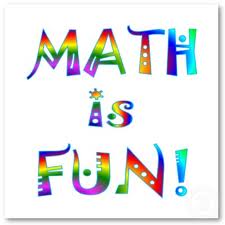Watching UC's offense change dramatically the after halftime the last two games, I was curious about the trend of UC struggling offensively in the first halves then exploding after the break. Plus, I never miss an opportunity to break out an unnecessarily analytical math post. So here we go.
 This all feeds into what Mick Cronin was saying after Wednesday's game about his team taking time to relax at home. I wrote about that yesterday, you can read it here. Also, Tommy G and I discussed on yesterday's podcast which you can listen to here (highly recommended listening).
This all feeds into what Mick Cronin was saying after Wednesday's game about his team taking time to relax at home. I wrote about that yesterday, you can read it here. Also, Tommy G and I discussed on yesterday's podcast which you can listen to here (highly recommended listening). But here's the thrust of Cronin's theory:
"Stop worrying about the scoreboard and just play the game," Cronin said. "We have a tendency to do that at home. That's my theory, whether it is right or not we could all flip a coin, your theory might be better. Mine is, we play with stress at home like we are supposed to win by 30. It takes us a while to just get lost in the game and just play. We think we are supposed to be perfect at home. It's not realistic, for anybody."
This makes sense and holds water, personally I'm on board with the theory, but that has been a trend both at home and on the road in Big East play. And it's more than just foul shots at the ends of games, there is a dramatic difference in efficiency from one half to the next.
Consider this, in Big East play here are the Bearcats first half/second half average points splits:
- First Half: 26.5
- Second Half: 36.6
Pretty remarkable. Some notable turnarounds, too.
- Opponent: First half/Second half
- @Pitt: 26/44
- St. John's: 21/31
- @Rutgers: 27/41
- @Syracuse: 18/37
- Rutgers: 22/40
"I would say it's a common thread in college basketball," Cronin said. "The way the games are officiated has something to do with it. The way the benches are configured where we can call out the other team's plays. We are on defense in front of me so we can hold teams down. We held them to 15 last time and Marquette to 13. It goes both ways. They are calling out every play we run on their bench. Scouting report has a lot to do with it, size, strength, physicality. There are no secrets."
UC may be a part of a trend, but in the Big East they are also leading the charge of it. By taking a look at the breakdowns, it shows that in Big East conference play only this year they are tied with Marquette for the largest differential between first-half and second-half scoring at +10.1.
Here is the entire list:
- Team: First half average/Second half average -- difference
- Cincinnati: 26.5/36.6 -- +10.1
- UConn: 32.1/37.6 -- +5.5
- DePaul: 33.5/36.2 -- +2.7
- Georgetown: 30.6/29.6 -- -1.0
- Louisville: 33.3/33.8 -- +0.5
- Marquette: 27.1/37.2 -- +10.1
- Notre Dame: 31.8/35.0 -- +3.2
- Pittsburgh: 32.9/34.0 -- +1.1
- Providence: 29.3/37.9 -- +8.6
- Rutgers: 25.9/34.1 -- +8.2
- Seton Hall: 29.0/33.0 -- +4.0
- St. John's: 31.3/34.6 -- +3.3
- Syracuse: 30.3/36.1 -- +5.8
- USF: 24.0/29.1 -- +5.1
- Villanova: 31.6/31.9 -- +0.3
- Average: 29.9/34.4 -- +4.5
Oddly, the Bearcats average the third fewest points in the first half and third most points in the second half among all Big East teams.
The 4.5 is about the typical difference you would expect to account for free throws late in games. The other 5.6 points per game difference for UC comes from other factors. Part of that could be any number of the theories Cronin mentioned above. I would place halftime adjustments in there as well. That's been particularly obvious in games against Syracuse and Rutgers lately.
Despite his team's disparity, Cronin calling the problem an epidemic also holds water when you look at the overall numbers in college basketball the last few years. Looking across Division I, the median average first-half score gradually declined, and done some significantly when you date back a decade.
- Year: Median First Half Points
- 2012-13: 31.1
- 2011-12: 31.2
- 2010-11: 31.5
- 2009-10: 31.7
- 2002-03: 32.4
So, to answer the question in the headline, is UC's second-half surge part of a national trend? Yes and no. Clearly, the scoring before halftime has gone down, but few teams are seeing as wide a difference as UC this year when comparing an even Big East playing field. The best part about that is, no matter what happens before halftime, there's always a feeling the Bearcats are never out of it. Of course, if you haven't learned that during a season where only one game have they not won or had a shot to win at the buzzer, you just aren't paying close enough attention anyway and likely gave up on this post after the first set of bullet points.
I want to hear from you! Shoot me an email to pauldehnerjr@gmail.com or hit me up on Twitter @pauldehnerjr with any questions, comments or your theory on the difference between first half and second half. Or just a long email about your disdain for unnecessarily analytical math posts.
